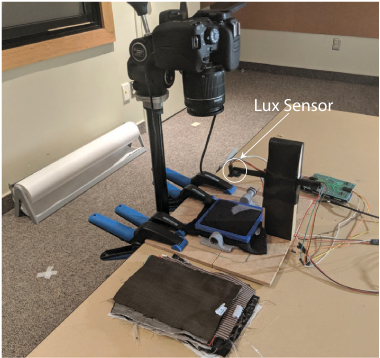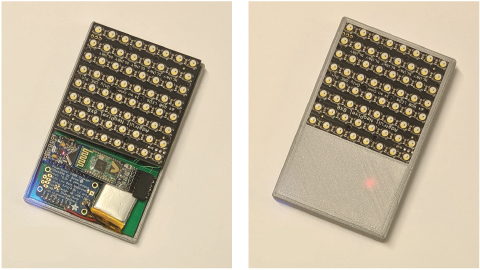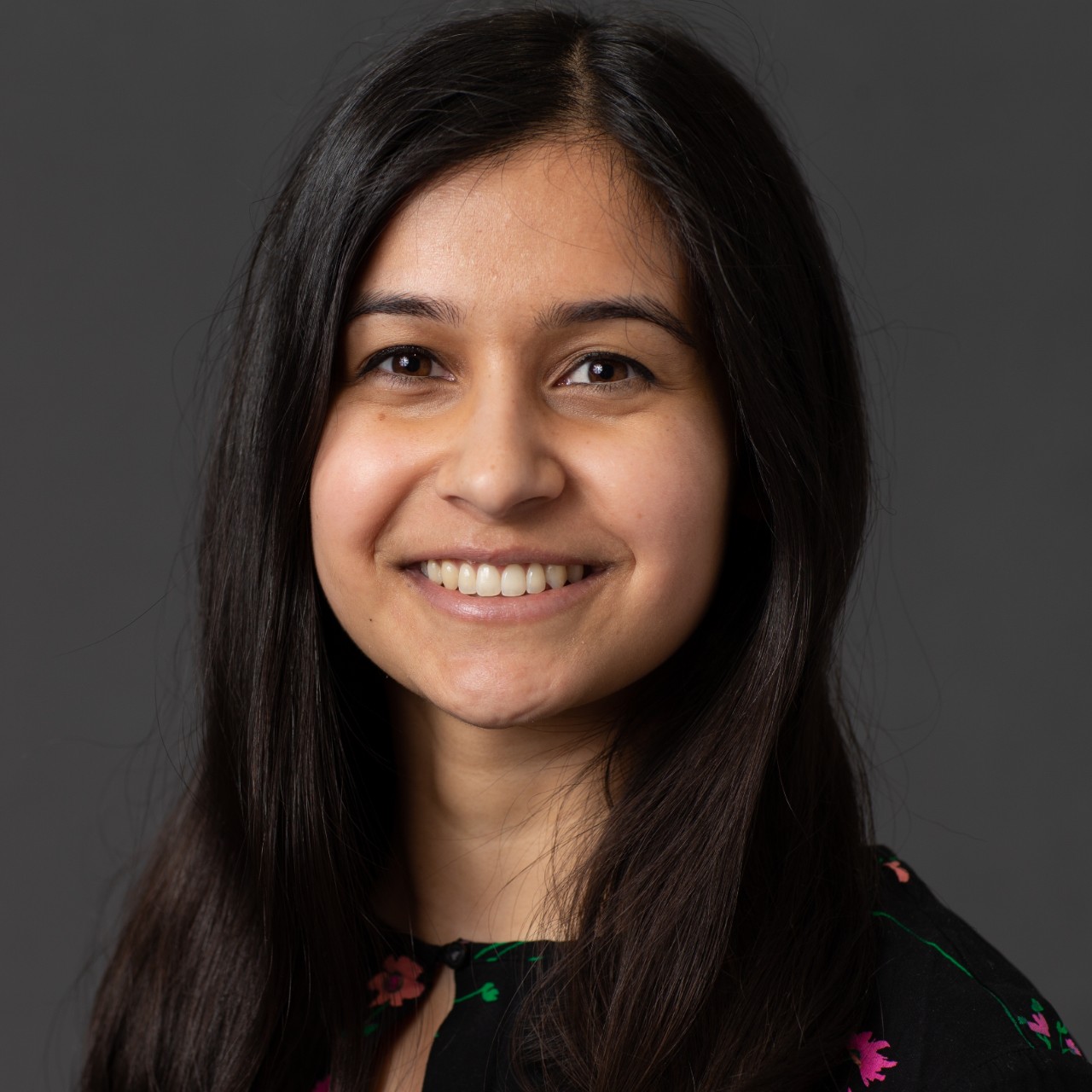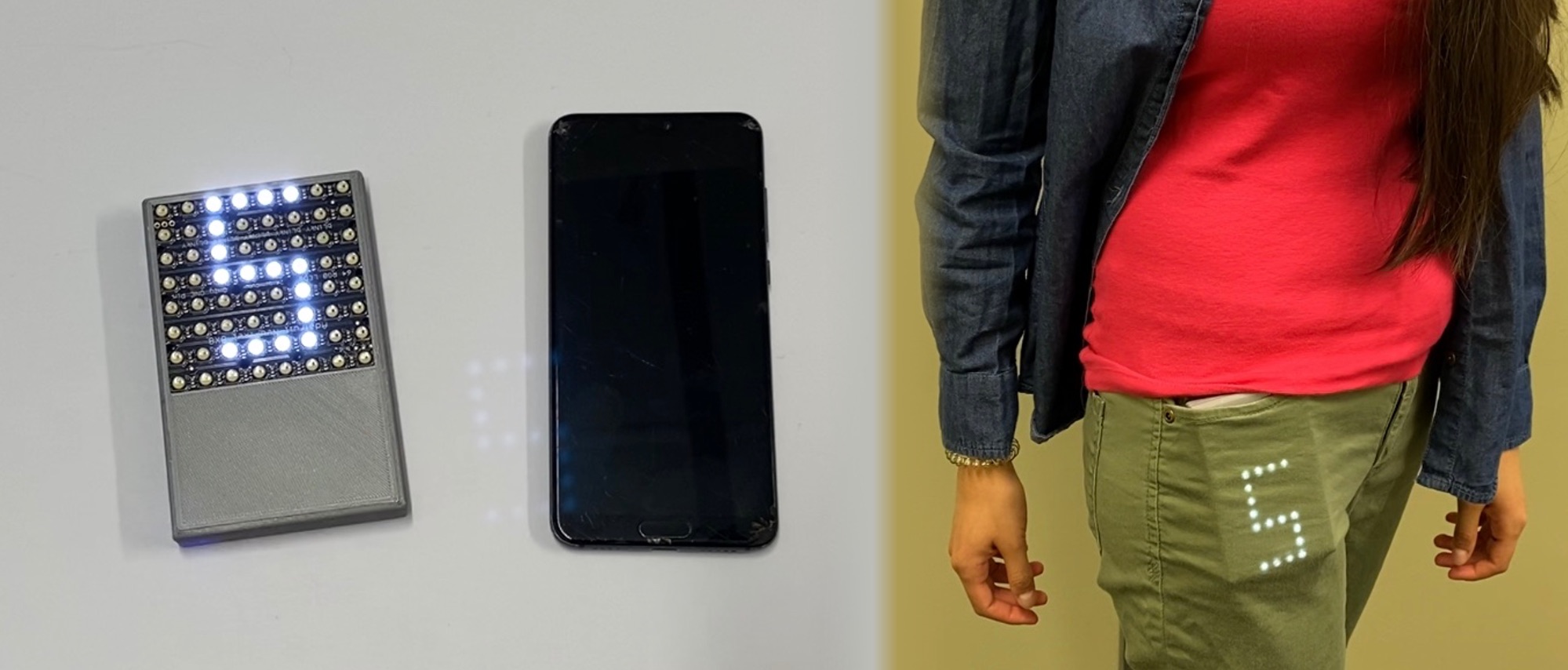Mobile phones are carried everywhere, but accessing information from them isn’t always convenient, like when stored in a pocket or bag. Phones must be retrieved to view information from them, which can be socially awkward in group settings, difficult when carrying something, or when driving or biking.
We explore how showing information through the fabric of pockets using bright LED matrix displays can make it easier to view information from an inaccessible phone, a concept we call PocketView.

Quick Facts
- We found that people want to view information from an inaccesible phone, and that many objects of varying sizes are kept in different pockets.
- A light transmission experiment revealed that many types of fabrics of varying thicknesses, colours, and patterns, transmit enough light from an LED matrix display.
- A user study using a preliminary prototype in the shape of a phone case shows that people preferred using the LED matrix technology over alternatives, like a PDLC transparent pocket.
- Inspired by the types of objects commonly stored in pockets, we created many form factors resembling these objects using the same LED matrix technology.
Survey
We conducted a survey to understand the need for accessing information on an inaccessible phone, the types of pockets on clothing, and the types of objects kept in them.
Overall, we found that a majority of respondents (67%) wanted to access information from an inaccessible phone, with 40% believing this was moderately to extremely important. Respondents wore clothing with pockets on many locations on the body, and store many different types of objects in them. Phones were the most common object kept in any pocket (94%).
When considering the specific objects placed in each pocket location, men were more likely to store large objects and phones in pockets located on the upper thigh than women. Women also used a wider range of pockets to store their phones, with the stomach being the most common location:

Light Transmission Experiment
We conducted a technical experiment using a wide range of fabrics to compute light transmission and irregularity values. Transmission measures how much light passes through the fabric while irregularity measures how evenly the light is transmitted through different regions of the fabric. Together, these values provide insight into the optical properties of a through-fabric display.
We used a camera to capture images of different LED light patterns shining through each fabric and measured the light illumination using a lux sensor:

Overall, we found that light transmission is high for thin fabrics and low for thicker and darker fabrics. Irregularity was high for fabrics with textures and patterns and low for solid coloured fabrics.
We also looked at the visual separability of the individual LED pixels. We noticed this was affected by the fabric patterns and how tightly the fabric rested against the fabric:

Device Prototype
We created a self-contained, battery-powered device with an 8x8 LED matrix. This form factor resembles a wallet or a phone case:

Simple icons can convey information, like weather updates, fitness stats, arrows for navigation, and notifications about new emails. Tapping along the device allows the user to cycle through the different information sources:

Other Device Variations
We also created other smaller form factors resembling other objects people commonly place in their objects: a earbud case, a pen, and a car key fob:

These smaller prototypes can still convey useful information and may be more suitable for women’s clothing, that usually have smaller pocket sizes:

User Study
We conducted a qualitative user study to compare the approach of using an LED matrix to two extreme baselines:
- A standard phone display shining through a pocket at maximum brightness.
- A PDLC transparent pocket that can change between being fully transparent and opaque. This is a futuristic example of a through-fabric display.

Overall, participants rated the LED matrix (92%) and the PDLC (83%) displays highly (a rating of 4 or 5 on a 5-point scale), but only 67% rated the standard phone highly. Participants also noted that the PDLC display was not visually appealing, so the LED prototype may be a better choice for fashion purposes.
Our approach provides a new way to view information on a smartphone through the fabric of a pocket. We hope our work will open a new design space for viewing and interacting with devices without removing them from their stored location.
Publication
Antony Albert Raj Irudayaraj, Rishav Agarwal, Nikhita Joshi, Aakar Gupta, Omid Abari, and Daniel Vogel. 2021. PocketView: Through-Fabric Information Displays. In Proceedings of the 2021 ACM Symposium on User Interface Software and Technology (UIST 2021). DOI: https://dl.acm.org/doi/10.1145/3472749.3474766.
BibTeX
@inproceedings{
Irudayaraj2021PocketView,
author = {Irudayaraj, Antony Albert Raj and Agarwal, Rishav and Joshi, Nikhita and Gupta, Aakar and Abari, Omid and Vogel, Daniel},
title = {PocketView: Through-Fabric Information Displays},
year = {2021},
isbn = {9781450386357},
publisher = {Association for Computing Machinery},
address = {New York, NY, USA},
url = {https://doi.org/10.1145/3472749.3474766},
doi = {10.1145/3472749.3474766},
pages = {511–523},
numpages = {13},
location = {Virtual Event, USA},
series = {UIST '21}
}
Presentation
Press
PocketView has been featured in a variety of media:
Contact Us






Antony Albert Raj Irudayaraj,
Rishav Agarwal,
Nikhita Joshi,
Aakar Gupta,
Omid Abari, and
Daniel Vogel.
University of Waterloo © 2021
Blog post template by Johann Wentzel.

